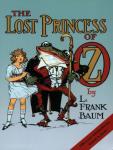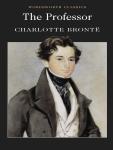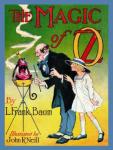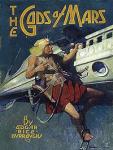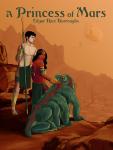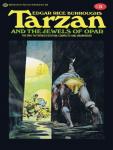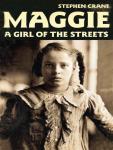Robinson Crusoe
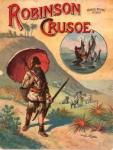
This book is a novel by Daniel Defoe, first published on 25 April 1719.Crusoe (the family name corrupted from the German name "Kreutznaer") sets sail from the Queen's Dock in Hull on a sea voyage in August 1651, against his parents' wishes, who want him to pursue a career, possibly in law. After a tumultuous journey where his ship is wrecked in a storm, his lust for the sea remains so strong that he sets out to sea again. This journey, too, ends in disaster as the ship is taken over by Salé pirates (the Salé Rovers) and Crusoe is enslaved by a Moor. Two years later, he escapes in a boat with a boy named Xury; a Captain of a Portuguese ship off the west coast of Africa rescues him. The ship is en route to Brazil. With the captain's help, Crusoe procures a plantation.Years later, Crusoe joins an expedition to bring slaves from Africa but he is shipwrecked in a storm about forty miles out to sea on an island (which he calls the Island of Despair) near the mouth of the Orinoco river on September 30, 1659. The details of Crusoe's island were probably based on the Caribbean island of Tobago, since that island lies a short distance north of the Venezuelan coast near the mouth of the Orinoco river, in sight of Trinidad.[7] Only he and three animals, the captain's dog and two cats, survive the shipwreck. Overcoming his despair, he fetches arms, tools, and other supplies from the ship before it breaks apart and sinks. He builds a fenced-in habitat near a cave which he excavates. By making marks in a wooden cross, he creates a calendar. By using tools salvaged from the ship, and ones he makes himself, he hunts, grows barley and rice, dries grapes to make raisins, learns to make pottery, and raises goats. He also adopts a small parrot. He reads the Bible and becomes religious, thanking God for his fate in which nothing is missing but human society.More years pass and Crusoe discovers native cannibals, who occasionally visit the island to kill and eat prisoners. At first he plans to kill them for committing an abomination but later realizes he has no right to do so, as the cannibals do not knowingly commit a crime. He dreams of obtaining one or two servants by freeing some prisoners; when a prisoner escapes, Crusoe helps him, naming his new companion "Friday" after the day of the week he appeared. Crusoe then teaches him English and converts him to Christianity.After more natives arrive to partake in a cannibal feast, Crusoe and Friday kill most of the natives and save two prisoners. One is Friday's father and the other is a Spaniard, who informs Crusoe about other Spaniards shipwrecked on the mainland. A plan is devised wherein the Spaniard would return to the mainland with Friday's father and bring back the others, build a ship, and sail to a Spanish port.Before the Spaniards return, an English ship appears; mutineers have commandeered the vessel and intend to maroon their captain on the island. Crusoe and the ship's captain strike a deal in which Crusoe helps the captain and the loyal sailors retake the ship and leave the worst mutineers on the island. Before embarking for England, Crusoe shows the mutineers how he survived on the island and states that there will be more men coming. Crusoe leaves the island 19 December 1686 and arrives in England on 11 June 1687. He learns that his family believed him dead; as a result, he was left nothing in his father's will. Crusoe departs for Lisbon to reclaim the profits of his estate in Brazil, which has granted him much wealth. In conclusion, he transports his wealth overland to England to avoid travelling by sea. Friday accompanies him and, en route, they endure one last adventure together as they fight off famished wolves while crossing the Pyrenees.
Contents
- Chapter 1 - Start In Life
- Chapter 2 - Slavery And Escape
- Chapter 3 - Wrecked On A Desert Island
- Chapter 4 - First Weeks On The Island
- Chapter 5 - Builds A House - The Journal
- Chapter 6 - Ill And Conscience-Stricken
- Chapter 7 - Agricultural Experience
- Chapter 8 - Surveys His Position
- Chapter 9 - A Boat
- Chapter 10 - Tames Goats
